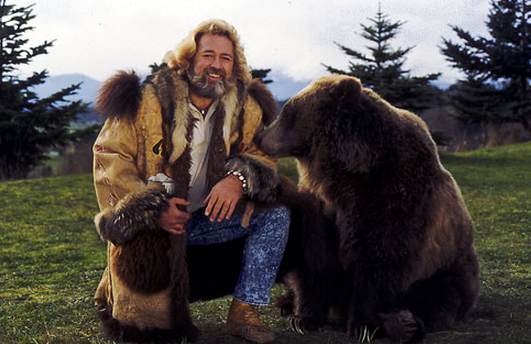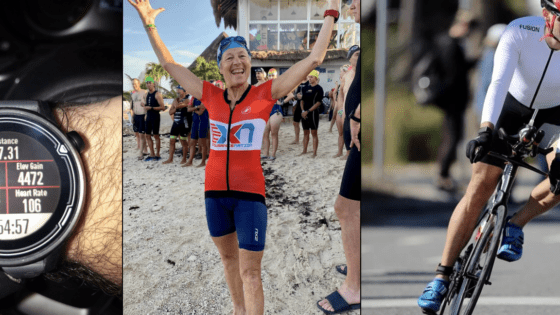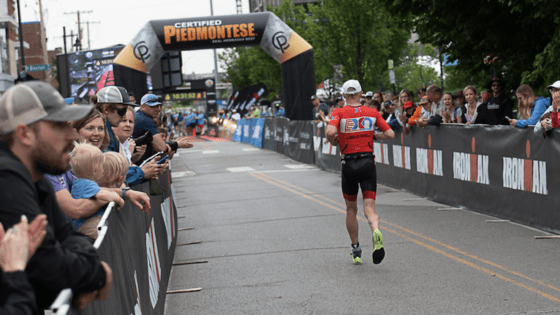
Grizzled Triathlon Vet (actual Grizzly Bear and awesome beard not included)
In my last post I shared with you Four Tips for Achieving Longevity in Long Course Triathlon…but I left you hangin’ on the fourth — how to schedule your triathlon season like a grizzled vet of the endurance fitness lifestyle! Below are the tools I use when creating over 1000 Season Plans per year — for all of our trial members and TeamEN athletes — and advising them on how to best schedule their year.
#1 — Trick Your Head into Only Training for Your A-Race for about Ten to Twelve Weeks
This is my first tip for you but it’s actually the Numero Uno Guiding Principle of everything we do! The nature of long course triathlon is that we have to register for these races months and months, up to a year, in advance. This can lead to 100% guaranteed mental burnout at some point in your season if you’re not prepared. You avoid this by putting smaller races, training events, and other cool stuff on the calendar about every four to twelve weeks. When you schedule your year like this, you aren’t training “for” The Big Race — that is, feet on the floor at 0530, head in a space where you are training “for” IMXX — until about twelve weeks out. Rather, you’re moving from Cool Event to Cool Event, building your fitness and preserving your head for the Race Preparation Phase, where everything is much more important.
#2 — Build Your FAST, then Add FAR to it
The best time for you to get much, much faster is when we can separate your desire to be faster from the requirement that we also build your endurance for a specific race. So when you’re looking at your training and racing calendar, your Get Faster block, our OutSeason, should be well away from your Build Your Far block of training.
We’ve written much more about our FAST, then FAR approach in our OutSeason® EBook.
#3 — Keep Your Training Volume as Low as You Can for as Long as You Can
#3 is the product of #1 and #2. That is, if we want to keep our heads disengaged from “training for” a race for as long as possible, and if our best opportunity to get faster is when we can separate “that” from the requirement to build your endurance, then the solution is to keep your training volume as low as we can for as long as we can. Inside Endurance Nation we usually keep our athletes’ over all training volume (the sum of swim, bike, and run volume) fixed for the majority of the year, and instead manage the intensity and details of each individual workout.
Lower training volume:
- Creates the opportunity to trade volume for intensity — going faster, within the context of low volume and therefore more recovery available, makes you FASTER!
- Preserves your head. See Tip #1 above.
- Conserves SAUs (Spousal Approval Units) — rather than nickel and diming your family every Saturday from now through the End of Time for ever increasingly long bike rides…just fix that long ride at 2-3hrs and ride very, very hard. Cap your Wednesday morning run at 45 minutes, or whatever is easily accommodated within your schedule, and then manage the details within this fixed 45 minute run.
#4 — Schedule a Single Sport Focused Block of Training
If the best time to get much faster is when you don’t have to also “get farther,” then we can significantly boost this get faster mojo when we can also reduce the requirement to train you in all three sports. That is, think and train like a single-sport athlete for about eight weeks:
- At the end of your current season — while you still have your current, end-of-the-season fitness but before your OutSeason® block, or…
- Between the end of our OutSeason® and the start of your official training for your first A-race.
Go here to read about how we are implementing this approach with our athletes for 2013
But…
#5 — Don’t Run a Marathon!
Becoming a stronger runner (faster + more durable) is probably the most valuable improvement you can make in this sport and we’re all about that. But don’t use marathon training — and racing, more specifically — as your tool to becoming a stronger runner! Marathon training and racing is accompanied by a huge opportunity cost — the lost, or compromised, opportunity to become a faster runner and a faster cyclist.
Read: Marathons and Triathlon Training
#5 — Get Your “1:20 and 2:30” Every Week
Instead, get in your “1:20 and 2:30” every week. That is, as a long course triathlete, or short course athlete looking to move to long course distance next season, the most valuable recurring weekly training sessions you can have are an eighty minute long run and two and a half hour long ride. That is, from now through the End of Time, you do these sessions every week. The exceptions are scheduled periods of downtime to reset your head and long periods of being sentenced to riding your bike on a trainer — there is almost never a reason to ride longer than about ninety minutes on a trainer.
Maintaining these weekly long bike and run volumes throughout the year create several powerful opportunities:
- The endurance and consistency to ramp things up on short notice to train for a half Ironman, or to use as an excellent head start for Ironman® training.
- More likely to follow our “keep your volume as low as you can for as long as you can” guidance — if you’ve been knocking out week after week and month after month of 1:20/2:30, you’re less likely to be skeered into jumping into your A-race training plan too early and more likely that you’ll keep building your FAST vs your FAR.
- Facilitates the addition of social opportunities within your training week — it’s much easier to find Training Victims for weekly 1:20/2:30 long runs and rides vs 2:00/4:00.
- Realigns your perspective of “long” — if you’ve been knocking out week after week of 1:20 long runs, bumping to 1:45 or 2hrs isn’t a huge mental stretch. The same is true for ramping up your long ride from 2:30 to 3:30 or 4hrs.
#6 — Schedule “Fun Volume Pops”
Finally, rather than nickle and diming your family, and burning through valuable SAUs, every week for an extra hour on Saturday for your long ride, put Epically Cool really big weekends on the calendar months and months into the future, buying you time to earn those SAUs bit by bit. We encourage our athletes to schedule Big Bike or Bike Tri Weeks (or weekends) — GO BIG, for three, four, five or more days, accrue a very time efficient endurance pop, and then get back to your regularly scheduled training. More importantly, make it super cool, trick your friends into doing it with you or joining you for as much of it as they can.
In summary, the approach we use to help our team of nearly 600 triathletes build their seasons is to largely disengage their heads from the act of actually training for their A-race(s) for much of their season:
- On the training front, this keeps their training volume relatively low for the majority of the season, creating the opportunity to make them much faster.
- On the do-the-right-thing front, it keeps them sane, well-balanced, employed, and married (bonus!). And as coaches of real world age group triathletes, just like you, this is our primary consideration.




Leave a Reply